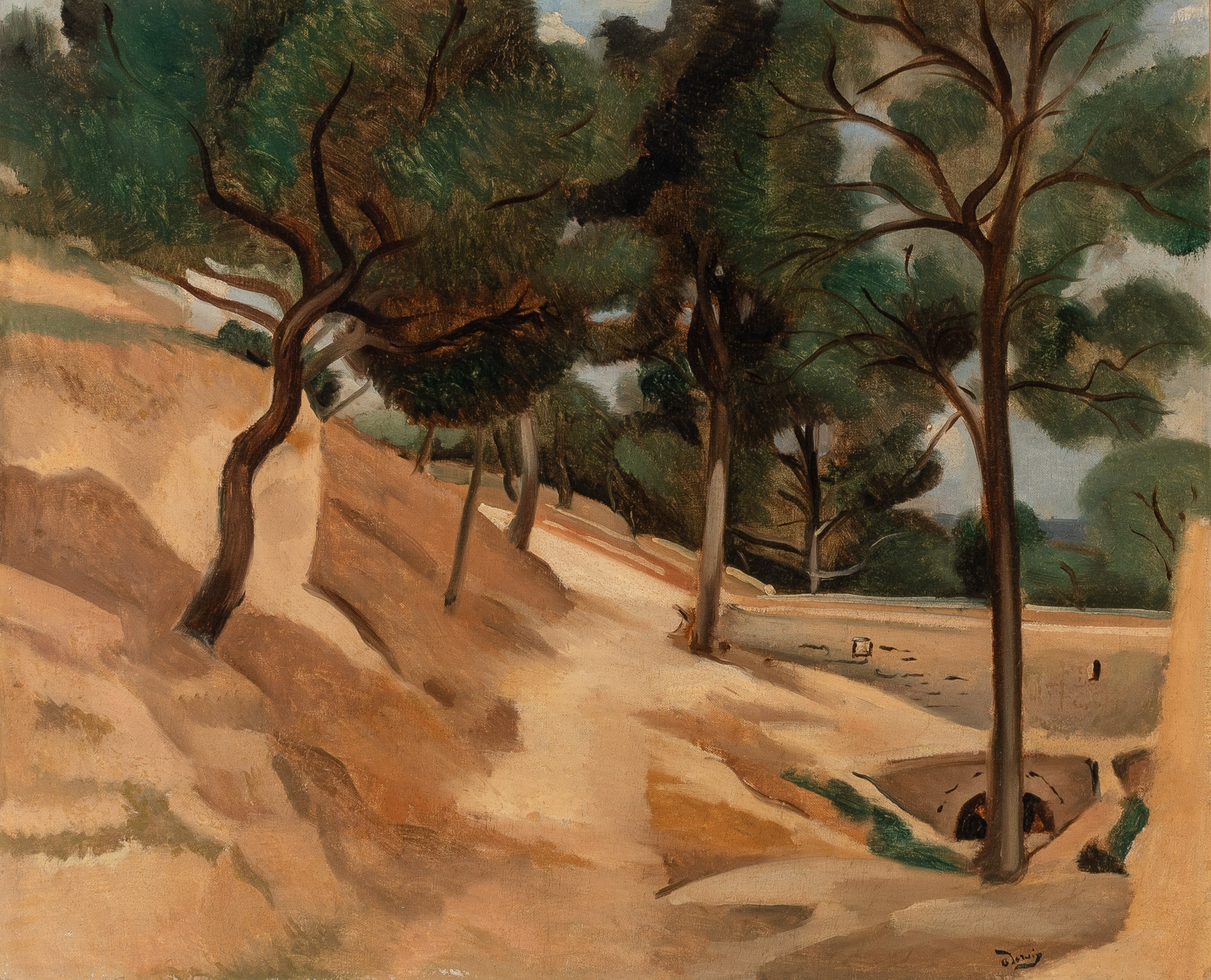
André Derain
French, 1880-1954
André Derain was born in Chatou, near Paris, and began painting in his teens. He studied briefly under Eugène Carrière, where he met Henri Matisse, marking the beginning of a long creative exchange. By the early 1900s, Derain had become a central figure in the Fauvist movement alongside Matisse and Maurice de Vlaminck. His early landscapes, particularly those painted in Collioure and London, are known for their intense, non-naturalistic color and energetic brushwork, reflecting a bold exploration of form through pure color.
After World War I, Derain shifted toward a more classical and structured style in response to the widespread call for a “return to order.” His later work includes still lifes, portraiture, and mythological themes rendered with compositional precision. He also expanded into stage design, creating sets and costumes for major ballet and opera productions, demonstrating a versatility that extended beyond the canvas.
Though he gained considerable acclaim during his lifetime, Derain's legacy became complicated by his associations during the German occupation of France in World War II. He remained a prolific and influential figure until his death in Garches in 1954. Today, Derain is recognized as a key transitional artist, bridging early modernism with classical traditions, whose work continues to attract collectors and historians for its daring innovation.